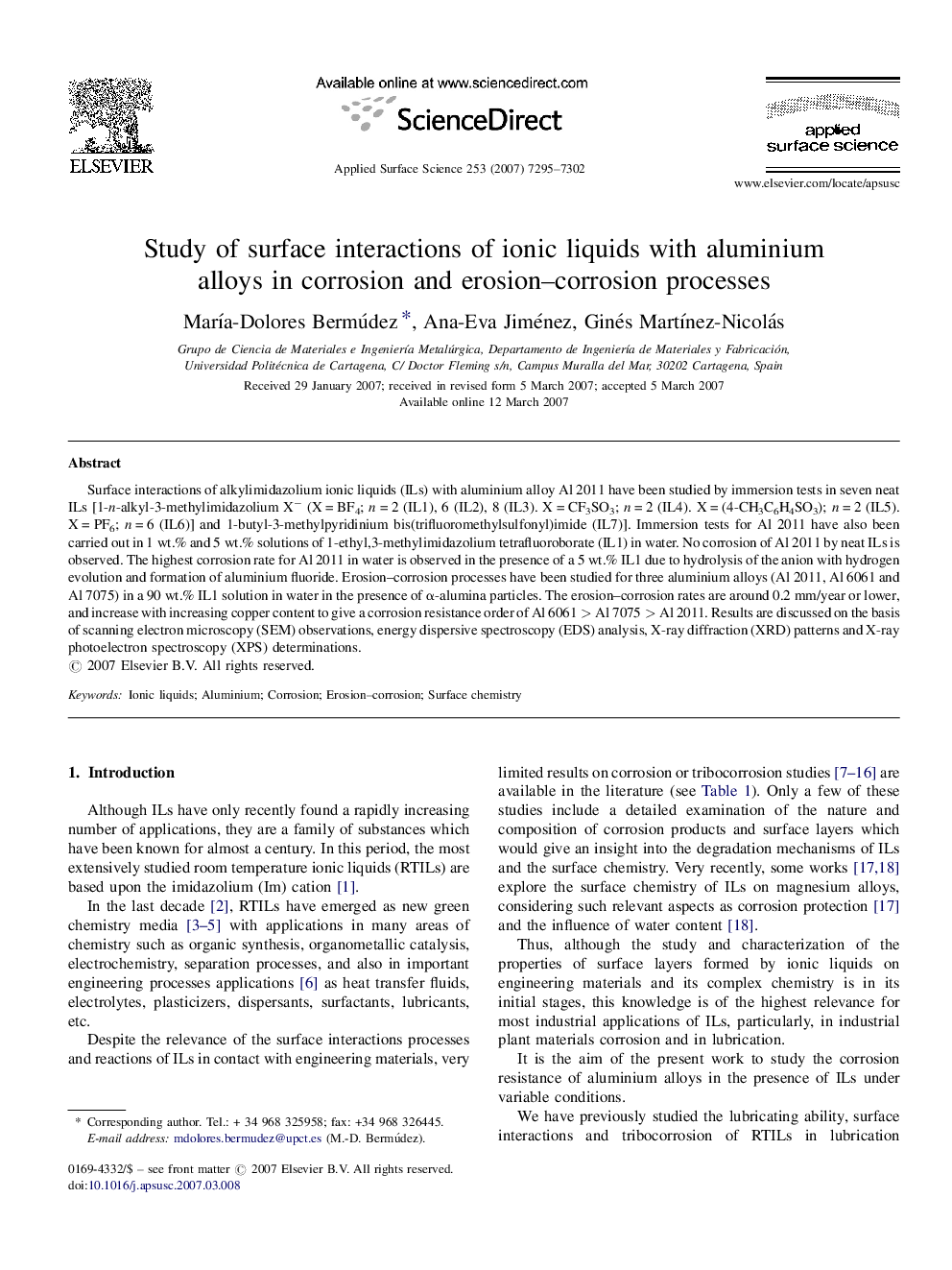| Article ID | Journal | Published Year | Pages | File Type |
|---|---|---|---|---|
| 5368456 | Applied Surface Science | 2007 | 8 Pages |
Surface interactions of alkylimidazolium ionic liquids (ILs) with aluminium alloy Al 2011 have been studied by immersion tests in seven neat ILs [1-n-alkyl-3-methylimidazolium Xâ (X = BF4; n = 2 (IL1), 6 (IL2), 8 (IL3). X = CF3SO3; n = 2 (IL4). X = (4-CH3C6H4SO3); n = 2 (IL5). X = PF6; n = 6 (IL6)] and 1-butyl-3-methylpyridinium bis(trifluoromethylsulfonyl)imide (IL7)]. Immersion tests for Al 2011 have also been carried out in 1 wt.% and 5 wt.% solutions of 1-ethyl,3-methylimidazolium tetrafluoroborate (IL1) in water. No corrosion of Al 2011 by neat ILs is observed. The highest corrosion rate for Al 2011 in water is observed in the presence of a 5 wt.% IL1 due to hydrolysis of the anion with hydrogen evolution and formation of aluminium fluoride. Erosion-corrosion processes have been studied for three aluminium alloys (Al 2011, Al 6061 and Al 7075) in a 90 wt.% IL1 solution in water in the presence of α-alumina particles. The erosion-corrosion rates are around 0.2 mm/year or lower, and increase with increasing copper content to give a corrosion resistance order of Al 6061 > Al 7075 > Al 2011. Results are discussed on the basis of scanning electron microscopy (SEM) observations, energy dispersive spectroscopy (EDS) analysis, X-ray diffraction (XRD) patterns and X-ray photoelectron spectroscopy (XPS) determinations.
